40 Facts About Numbers That Will Make You Feel Like a Mathematical Genius

The amount in your bank account. The page count of a book. That rapidly approaching deadline. Times, dates, phone numbers, street addresses—the whole world is numbers. But how much do you really know about them? As it turns out, numbers are a million times more fascinating than the most complex equation Pythagorus could think of. Here’s proof. And for more mind-blowing bits of trivia, check out these 40 Facts About Words That Will Make You Say “OMG!”
1
“Hundred” Doesn’t Mean 100

The word “hundred” is actually derived from the Old Norse word “hundrath,” which actually means 120, not 100. More specifically, “hundrath,” in Old Norse, means “long hundred,” which equals 120, due to the duodecimal system. But good luck trying to argue that your $100 bill is worth 20 percent more than it is. And for more surprising definitions, check out these 47 Cool Foreign Words That Will Make You Sound Crazy Sophisticated.
2
There Is Only One Even Prime Number

The number 2 is also the smallest and first prime number (since every other even number is divisible by two).
3
The Square Root of Two Is Called “Pythagoras’ Constant.”

Surely, you remember the Pythagorean Theorem from your 10th grade geometry class, but have you ever heard of Pythagoras’ Constant? Well, here’s the lowdown: The square root of 2 (1.41) is known as Pythagoras’ Constant. It’s also the very first irrational number ever to be discovered.
This all has to do with that Greek mathematician Pythagoras, and there is a fascinating history behind his famous theorem that they definitely did not teach you in high school—that Babylonian mathematicians discovered his famous theory 1,000 years before he did! And for more history facts they didn’t teach you in school, check out these 30 Crazy Facts That Will Change Your View of History.
4
Zero Is the Only Number That Can’t Be Represented In Roman Numerals
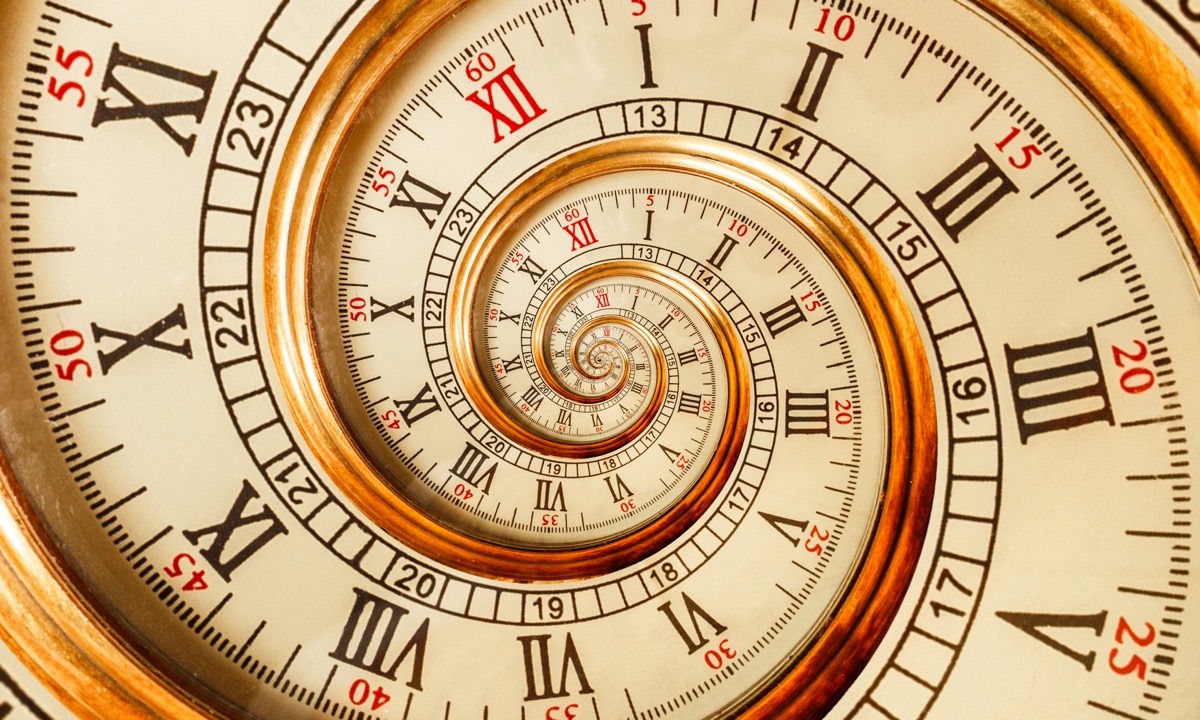
There are a total of zero zeros in Roman numerals. While the ancient Greeks were aware of zero as a concept, they didn’t consider zero to be a number at all. For example, Aristotle decided zero wasn’t a number because you couldn’t divide by zero. Instead of a Roman numeral, the Latin word “nulla” would have been used to represent the concept of zero. The reason no numeral existed for zero is because there was no need for a numeral to represent it.
5
Different Cultures Discovered Zero at Different Times

The idea of zero as a number was invented throughout the world at different times in history. Despite this scattered adoption, it’s generally accepted that the Indian astronomer and mathematician Brahmagupta brought up the concept of zero for the first time, around 600 A.D. Besides this, Brahmagupta contributed a lot to mathematics and astronomy, and is known for explaining how to find the cube and cube-root of an integer and also gave rules facilitating the computation of squares and square roots. And for more paradigm-shifting trivia, here are 50 Fun Facts About the World That Will Put a Smile on Your Face.
6
Roman Numerals Were Invented as a Means of Trading
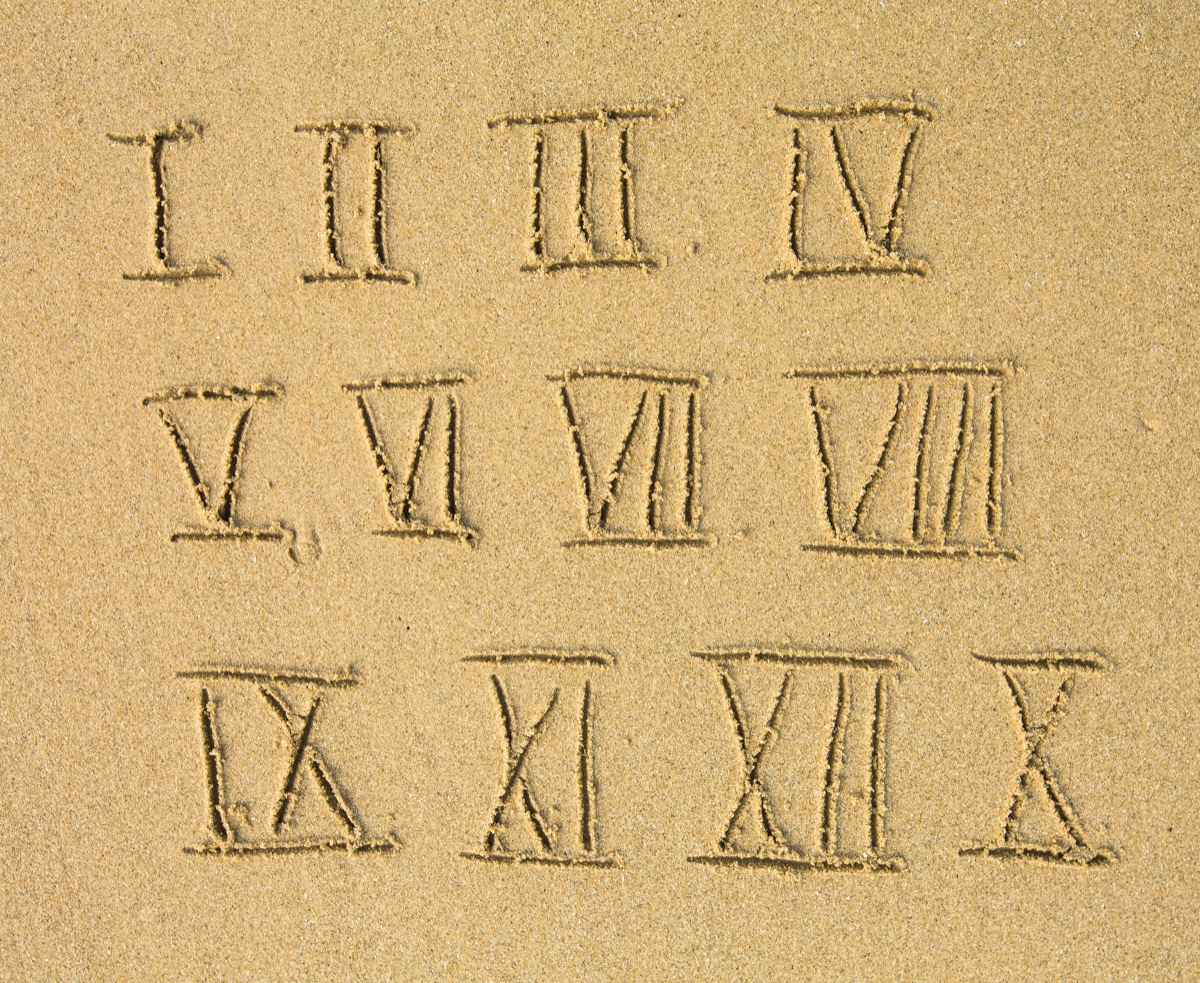
The form of record-keeping was used as a means for Romans to easily price different goods and services, and were widely used throughout the Roman Empire for everyday processes. After the fall of the Roman Empire, Roman numerals still continued to be used throughout Europe. This stopped, however, around the 1600s. Roman numerals are represented by seven different letters: I, V, X, L, C, D, and M.
7
Zero Is An Even Number
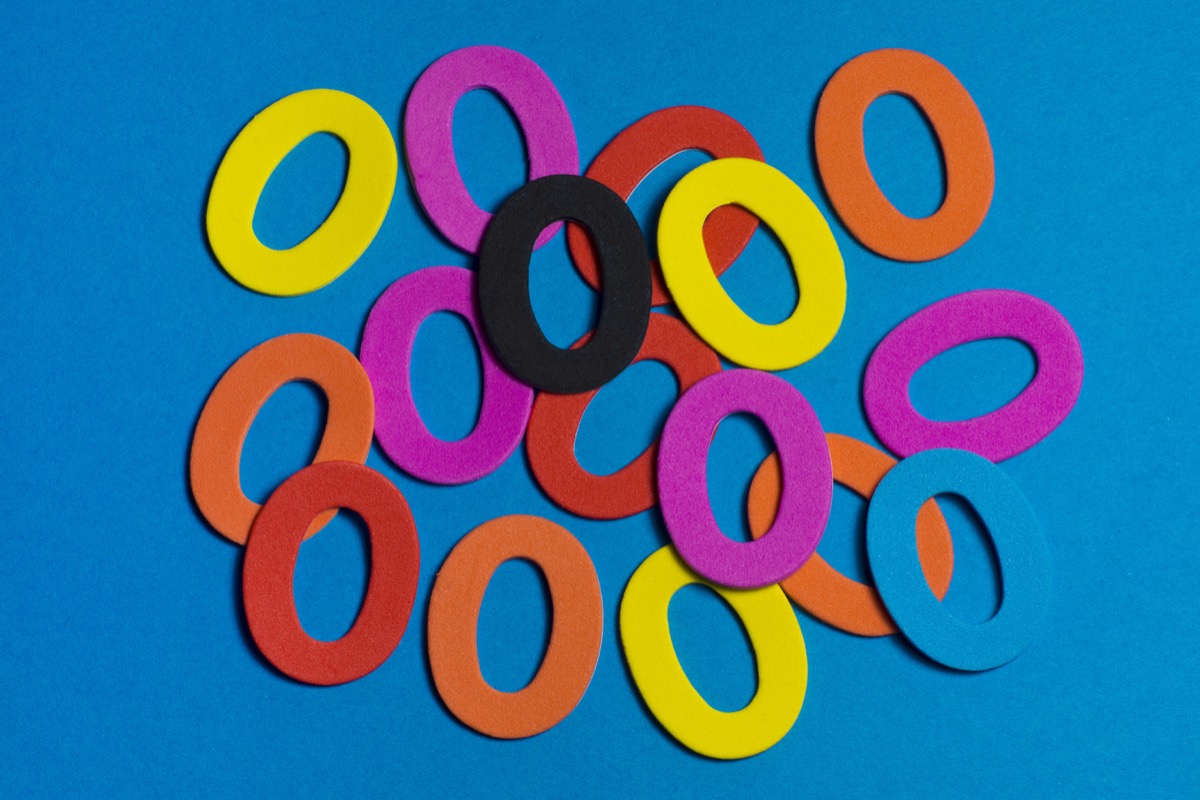
Mathematically, an even number is one that can be divided by two and still create a whole number. Zero meets the criteria for this because if you halve zero, you get zero. But if you’re confused, you’re not alone: Research from the 1990s, out of Cambridge University, actually revealed that people are 10 percent slower at deciding whether zero is even or not than they are if, say, two is.
8
There Is Only One Number Spelled With the Same Number of Letters as Itself

You probably never thought about this before, but there is only one number spelled with the same number of letters as itself. Can you guess which one? No? Well, It’s 4. Oh, and the number 4 on a calculator is made up of four light bars. Tell this fact at your next party! (You might not make many friends, though.) And for more cocktail party tidbits, here are 50 Facts So Crazy You Won’t Believe They’re Actually True.
9
Take Any Number And Multiply It by Three For a Cool Trick
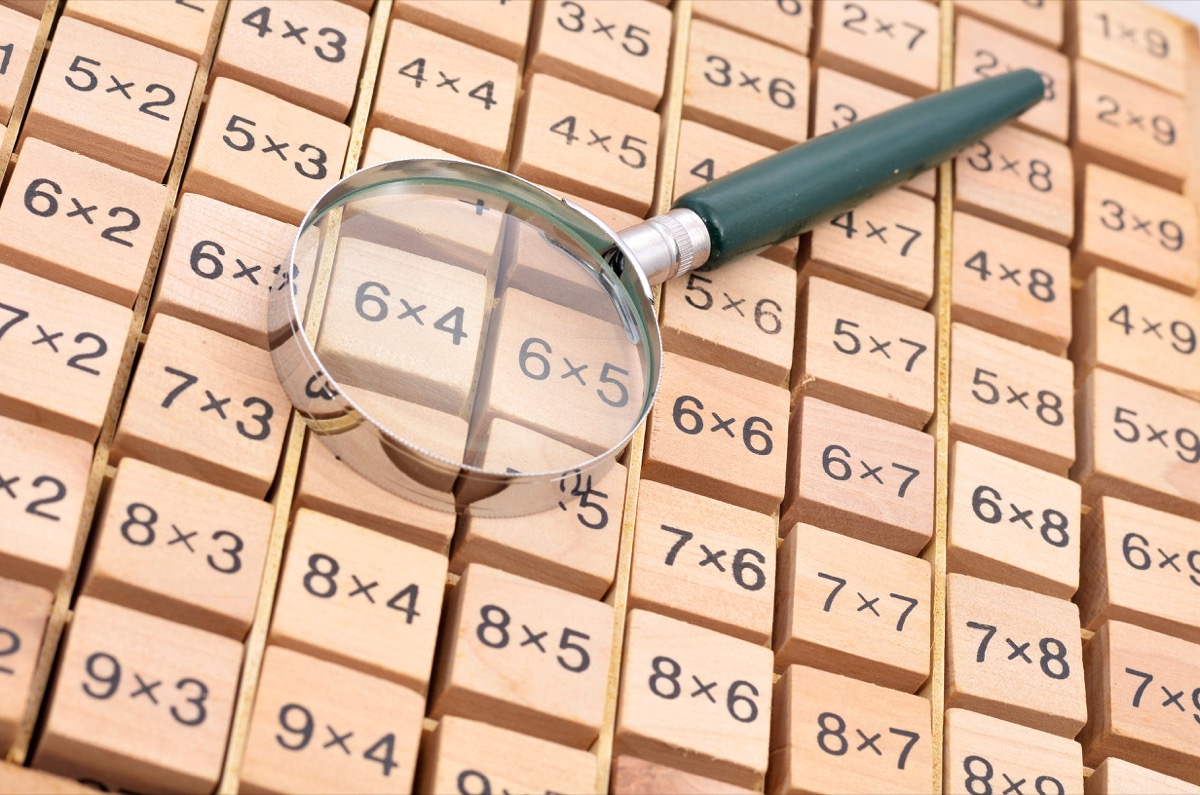
Take any number, and multiply it by three. Then, take the digits of that new number and add them all together. Whatever number that equals will always be divisible by three, no matter what number you started with. For example:
3 x 4 = 12
1 + 2 = 3
3 / 3 = 1
10
Six Is the Smallest Perfect Number
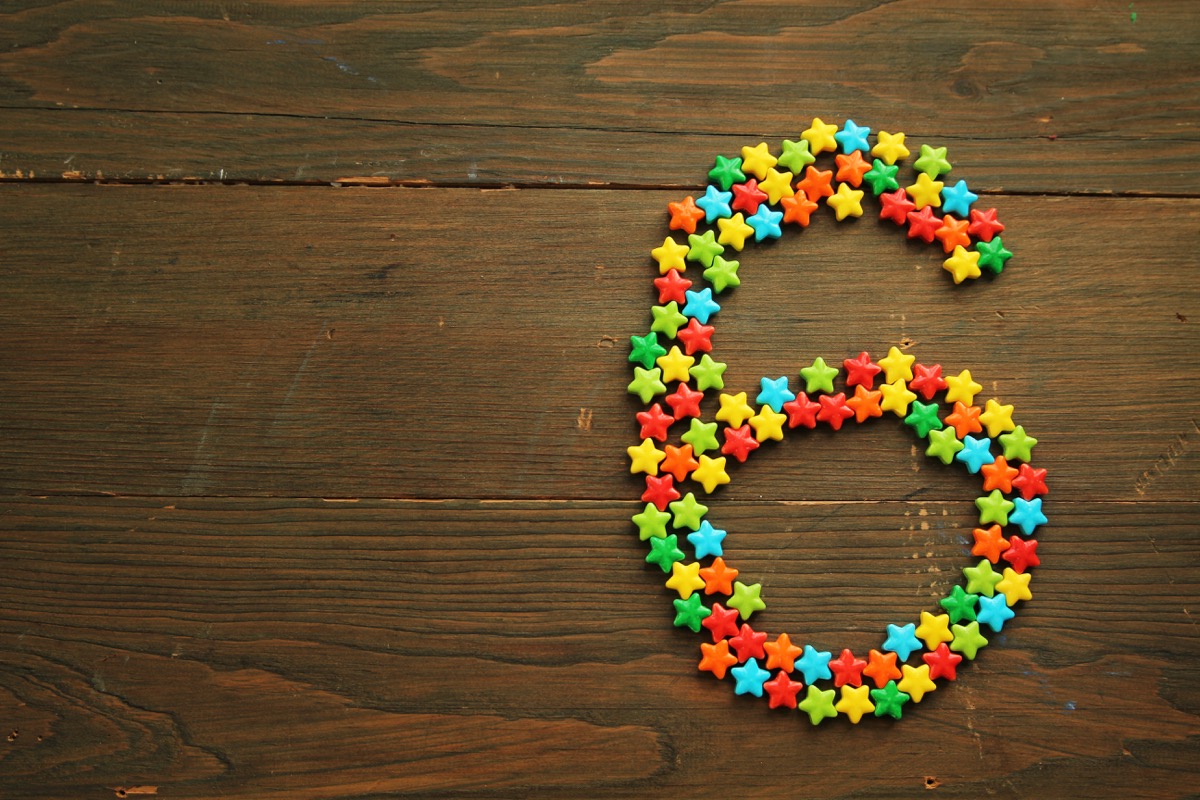
In number theory, a perfect number is a positive integer that is equal to the sum of its positive divisors. By this rule, six is the smallest perfect number. If you scratched your head and said, “Huh?,” here’s an example to clarify:
1 + 2 + 3 = 6.
The next perfect number doesn’t occur until 28. It turns out perfection really is few and far between…
11
The Numerical System We Use Today Is Older Than It’s Been in Use

The numerical system we use today—the one that is composed of the 10 symbols (you know: 1, 2 ,3, 4, 5 6, 7, 8, 9, 10)—is actually based on a Hindu-Arabic numeral system. This was developed more 1,000 years ago, but it wasn’t until the 15th century that these symbols we know today were used throughout Europe.
12
The Number Pi Is Irrational
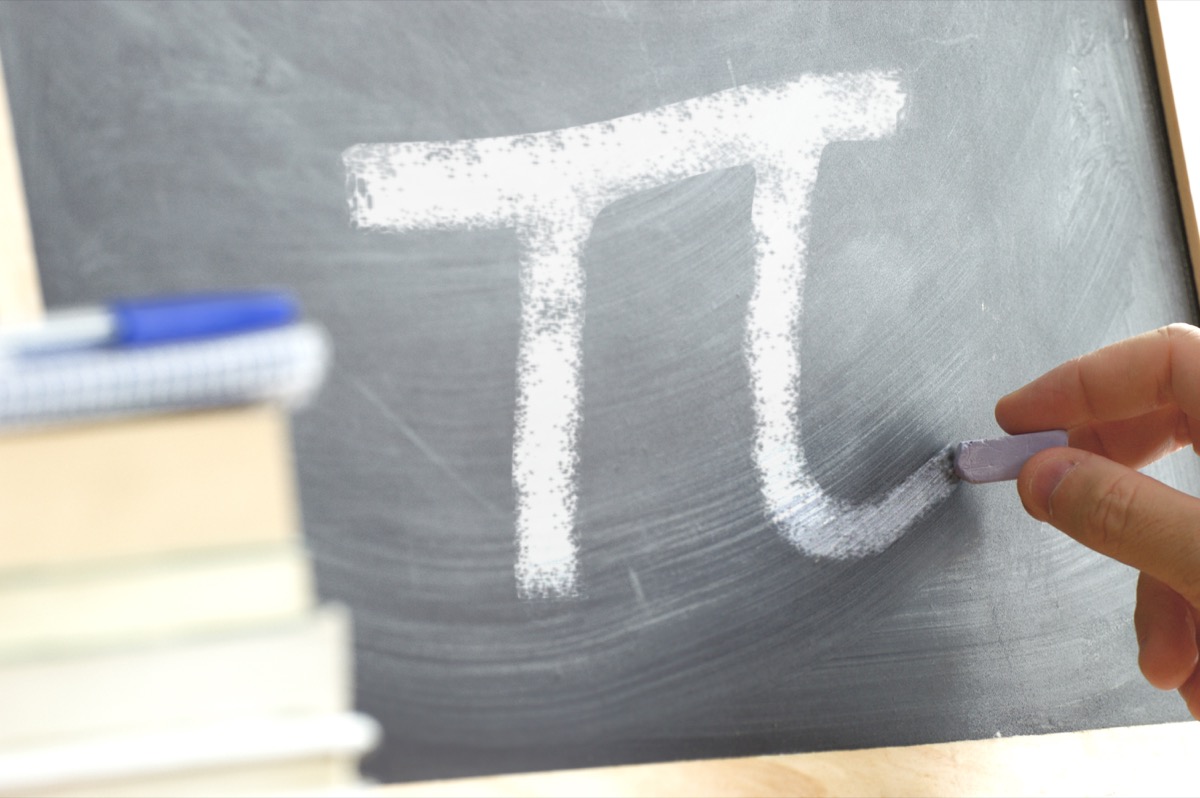
The number Pi—also known as the ratio of the circumference to the diameter of a circle—is irrational. This is because Pi cannot be written as a fraction. Also: Pi, when written as a decimal, never repeats and never ends. Oh, and there’s a designated Pi Day (March 14th, or 3/14).
13
2 And 5 Are the Only Prime Numbers That End With 2 And 5
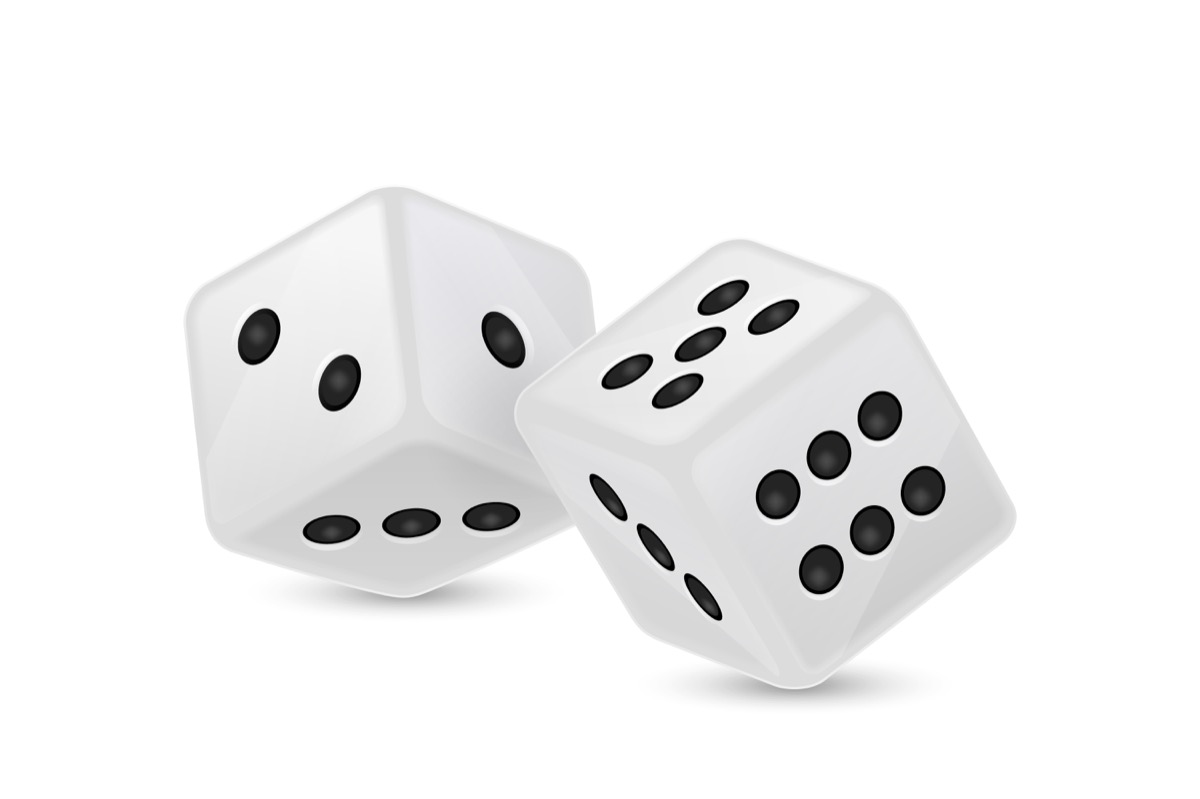
A prime number is a natural number greater than one that cannot be created by multiplying two smaller natural numbers. So, to put that in non-math talk, prime numbers are numbers greater than 1 that can only be formed by multiplying 1 by itself. A natural number greater than one that is not prime is called a composite number.
14
The Fibonacci Sequence Appears in Nature

Leonardo Fibonacci was from Pisa. He lived in the 13th Century in Italy, and is credited with discovering a mathematical sequence that’s now named after him: the Fibonacci Sequence. Starting at 0 and 1, this sequence is created as the sum of two preceding numbers in the sequence. So, for example:
0, 1, 1, 2, 3, 5, 8, 13, 21, 34, …
The Fibonacci Sequence often appears in nature—most commonly in rabbit litters. (Put one rabbit with another rabbit, and you’ll get two rabbits, which spawn three, who then mate to spawn five, and so on.) Also, the song “Lateralus,” by the American prog metal band Tool, is written in time with the Fibonacci Sequence. And for more awesome facts about modern music, don’t miss these 40 Facts About Music That Really Sing.
15
9 Is Considered a “Magic” Number

Have you ever heard that the number 9 is considered to be a “magic” number? No? Well it is, and here is why: if you multiply a number by 9 and add all the digits of the new number together, the sum will always add up to 9. So, for example:
8 x 9 = 72
7 + 2 = 9
Or:
4 x 9 = 36
3 + 6 = 9
See? It truly is magical. Try it out. Every single combination will always lead you back to 9!
16
The Number Pi Spells the Food “PIE”

If you pi (to the first two decimal places of 3.14) backwards, in big, blocky letters it actually reads “PIE.” Don’t believe me? Have a look here.
17
There Are Weird Reasons That Cats Are Said to Have 9 Lives

Whether you love cats or hate them, you have most definitely have heard of that myth that these felines have nine lives. But have you ever wondered where this idea came from? It stems from their ability to jump and land without getting hurt! It turns out there are a few theories for the number nine, though, one being that 9, again, is a magical number and was worshipped as such throughout the ages.
18
One Is Not a Prime Number

Often, the number 1 is confused as a prime number. But that’s not the case—one does not fulfill the requirements to be prime (being divisible by both 1 and itself). Divide 1 by 1 and you get…1. Nothing has been divided.
19
If a Pizza Has Radius “Z” and Height “A” the Equation Becomes…

Since the volume of a cylinder is PI, times the radius squared, times height, that would mean a pizza with radius “Z” and height “A” would have the volume of… PI * z * z * a.
20
Blackjack Didn’t Start as 21
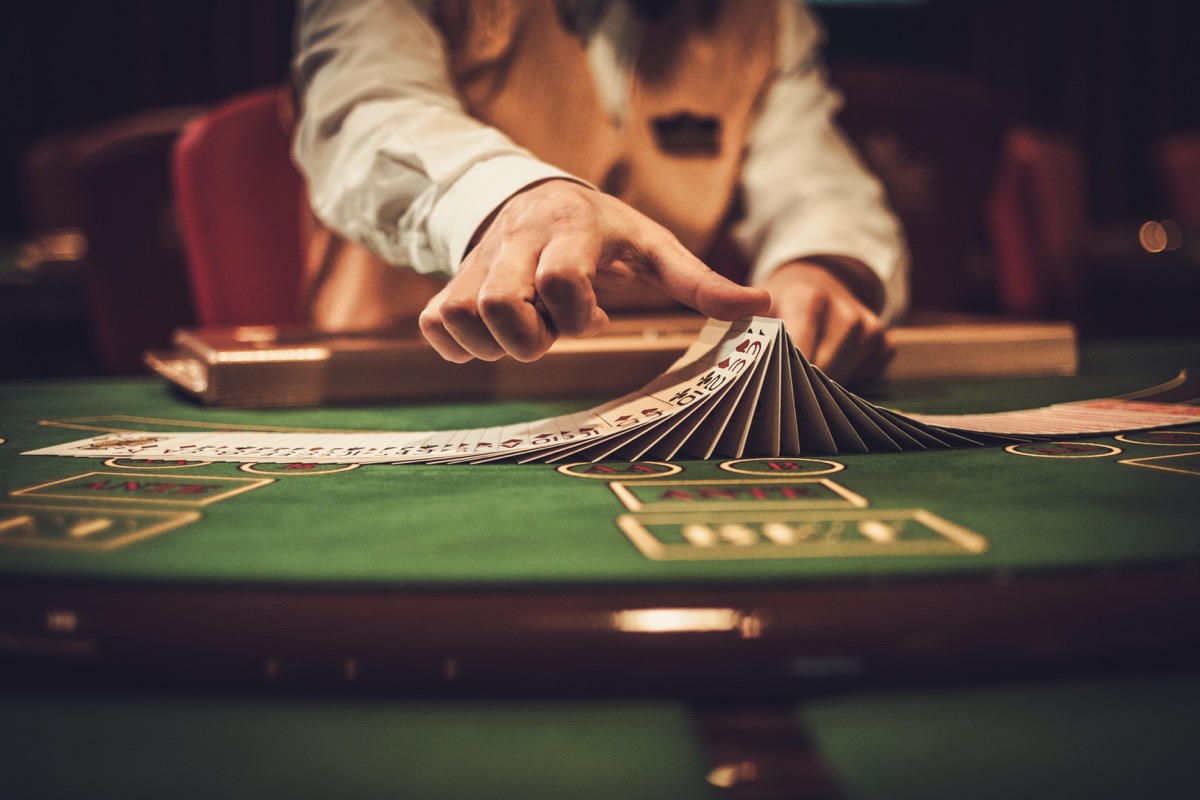
Anyone who’s played blackjack knows that the goal is to get to 21, or as close to it without going over. But the game is believed to have originated in Italy as the game Thirty One, which dates back to the 15th century. The goal is similar (to get as close as possible to 31) but with some slight differences: all cards between 8 and 10 are removed from the deck and face cards are worth one-half their face value.
21
7 Is the Most Popular “Favorite Number”

If you walked up to someone on the street and asked them what their favorite number is—of all the whole numbers between 1 and 100—there’s almost a 10 percent chance they will say “7.” These were the findings of mathematician Alex Bellos, who asked respondents to identify their favorite number, and found “7” to be the most popular choice. It was selected 9.7% of the time.
22
The Most Popular Two-Digit Number Is 13

You’d think unlucky number 13 would be one that most people want to stay away from. But in Alex Bellos’ research, it turned out to be the most popular two-digit number (selected by 5 percent of all respondents), and sixth-most popular number overall (following 7, 3, 8, 4, and 5 in the top five spots—that’s right, the number five is also the fifth most popular numbers).
23
There Is Such Thing as Happy Numbers
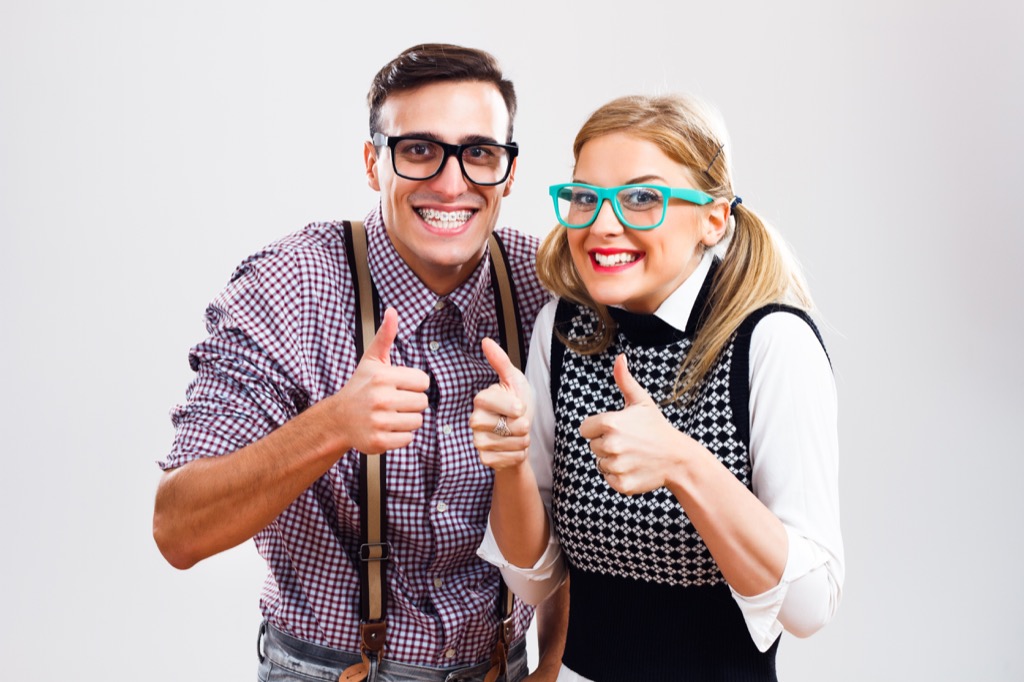
You heard one is the loneliest number, but did you know numbers can be happy, too? To test if a number is “happy,” replace it with the sum of squares in its digits, and continue the process until the number equals 1, or loops into a cycle that does not include 1. If the process ends with 1, the number is happy. For example, take 23:
22 + 32= 13
12 + 32 = 10
12 + 02 = 1
That means 23 is a happy number! Counting to 1,000, you’ll find there are 143 happy numbers.
24
7 Is Arithmetically Unique
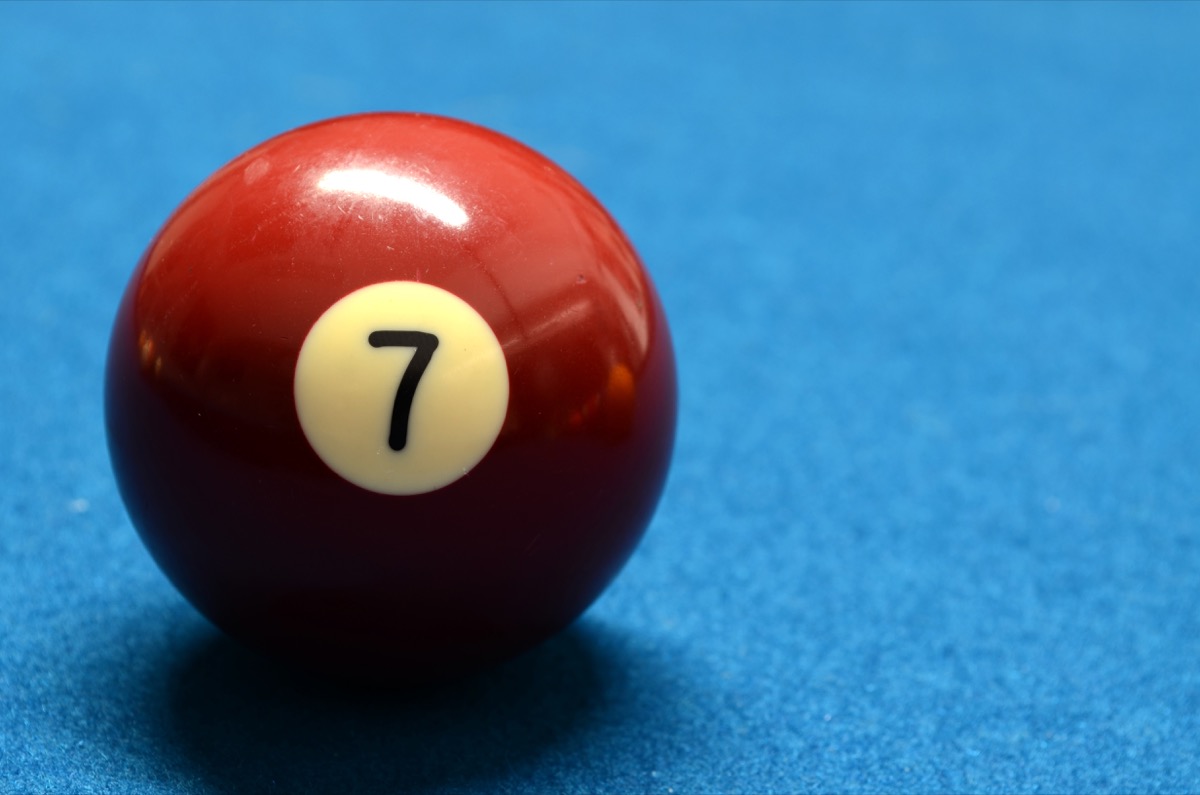
The number 7 may be so popular because it is arithmetically unique. Alex Bellos, again, explains: “Of the first 10 numbers, seven is the most prime. You cannot multiply or divide it within the group. It feels unique.” For example, you could multiply 4 by 2 to get 8 or divide 10 by 2 to get 5, but there’s nothing you can do with 7.
25
India’s National Game Means “Twenty-Five”

The cross-and-circle board game of Pachisi is a hugely popular game in India dating back centuries, played on a board in which a player throws several cowry shells. Its name translates in Hindi to “Twenty-Five,” which refers to the largest score that can be earned through the toss of the shells (there’s also a version where the score can reach 30). And for more fun games, check out these 12 Fun Family Games Everyone Will Get a Kick Out of Playing.
26
Six Weeks = 10! Seconds

That is, 10 × 9 × 8 × 7 × 6 × 5 × 4 × 3 × 2 × 1 = 3,628,800 seconds = 60,480 minutes = 1,008 hours = 42 days = 6 weeks.
27
There’s Not Enough Room in the World to Write Out a Googolplex
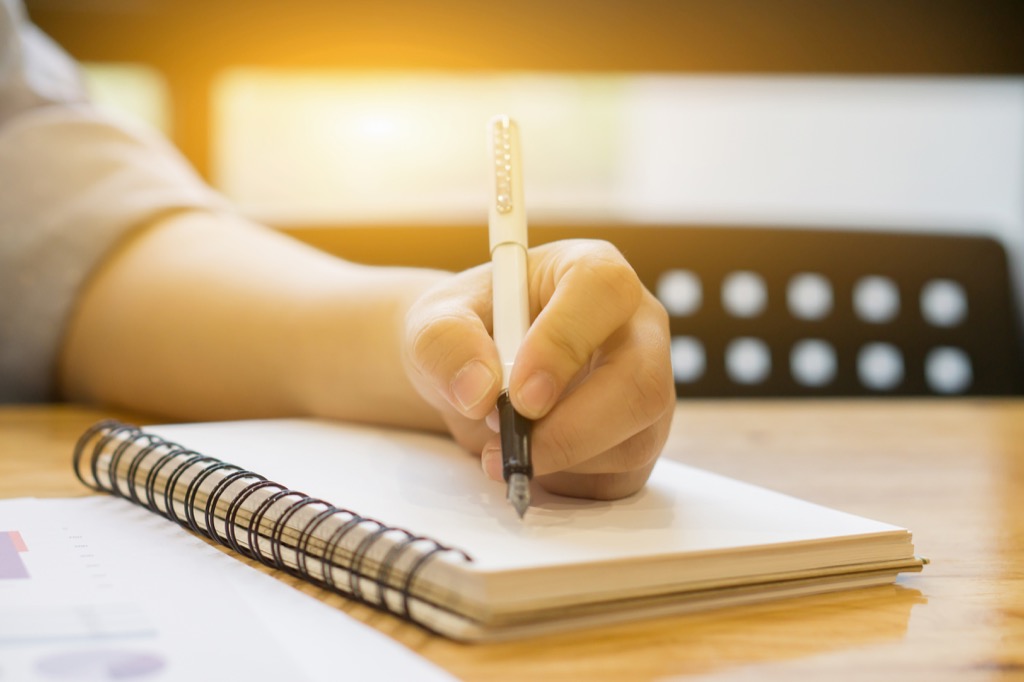
A googol means 1 followed by 100 zeroes. A googolplex is 1 followed by a googol zeroes. If it’s hard to imagine how long that number would look, there’s good reason for that: to write it out would create a number that’s so huge, if you wrote it out and printed it in a volumed series of books, it would weigh more than the entire planet.
28
The Mile-High City Is Exactly One Mile High
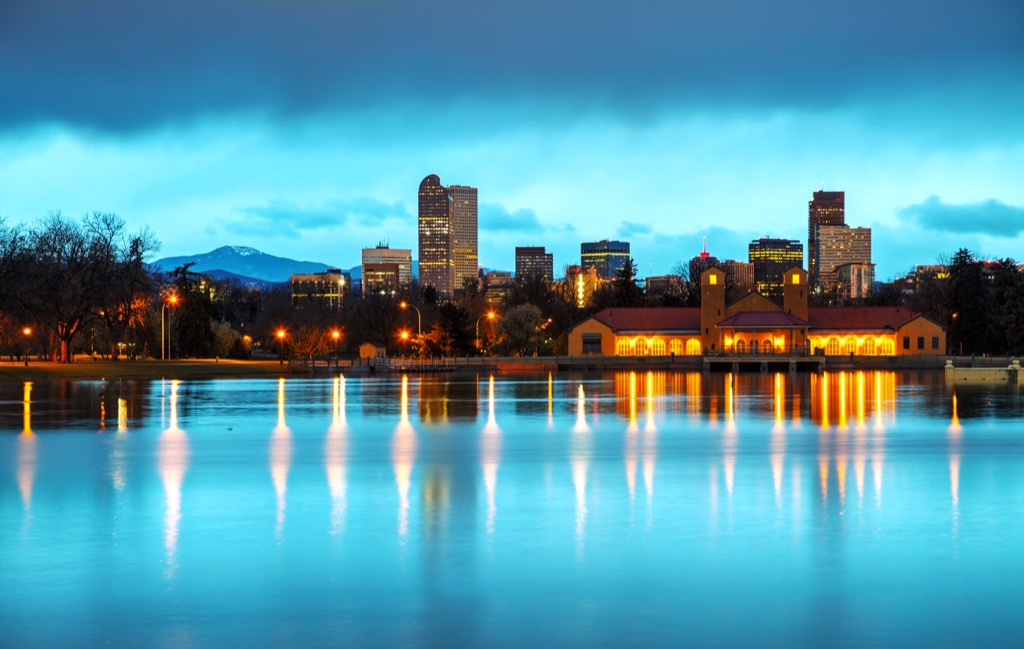
The city of Denver, Colorado, has an elevation of precisely 5,280 feet—that’s the length of a mile—which is why Denver is called the “mile high” city.
29
In Asia, 4 Is Considered Unlucky

Also known as “tetraphobia” the number 4 is viewed with superstition and distrust in much of East Asia. The reason for this may be due to the fact that the word for “four” sounds similar to “death” in a number of Asian languages, including Chinese, Japanese, and Korean.
30
In Thailand, “555” Is Hilarious

Teenagers texting in Thailand (say that three times fast) will send the digits “555” to indicate that something is funny. The reason? “5” is pronounced “ha”—so “555” translates to “hahaha.” Thus, “55555” means “hahahahaha,” or “ha” squared.
31
(6 × 9) + (6 + 9) = 69

Don’t laugh. Just type that into your calculator and you’ll see it’s true.
32
There Are 31 Days In Most Months

Out of the twelve months that make up a calendar year, the majority of these have 31 days: January, March, May, July, August, October, and December. Only four months—April, June, September, and November—have 30 days. And, of course, February typically only has 28 days, with the exception of leap years, when the month jumps up to 29 days—which happen every four years. The next leap year will be in 2020. You will know if a year is a leap year when the year’s number is evenly divisible by four.
33
In A Group Of 23 People, Two Will Probably Share a Birthday

In a sample of 23 people, there is a 50 percent chance that two will share the same birthday. This phenomenon is (fittingly) called the birthday problem. There is a whole calculation for why this is a thing, too. It all has to do with probability. For how, exactly, it works, direct yourself to this explainer, by mathematician Brett Berry, as she can do a far better job at explaining it than we ever could.
34
We See Odd Numbers as Male, Even Numbers as Female

You wouldn’t think numbers could have genders, but in our weird brains they do, apparently. Research published in the Journal of Experimental Psychology found that when an odd number was paired with a baby, subjects were much more likely to believe the baby was male, while they would assume the baby was female when paired with an even number.
It’s an assumption with a long history, according to Live Science: “Our tendency to assign gender to numbers has a long history. Both the Pythagorean philosophy of ancient Greece and the Chinese philosophy of yin and yang viewed numbers as possessing gender. Both cultures also viewed odd numbers as masculine and even numbers as feminine.”
35
There’s a Specific Name for 35th Anniversaries
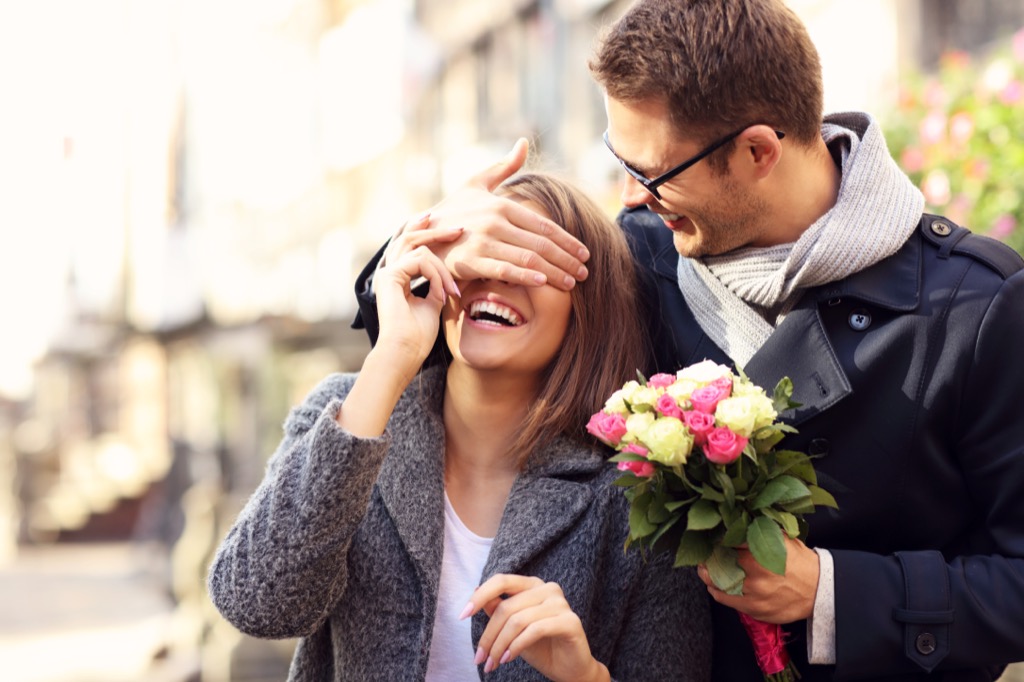
It’s called a “Coral Anniversary.” Go somewhere with snorkeling!
36
There Are More Ways to Arrange a Deck of Cards Than There Are Atoms on Earth

That probably seems crazy, but the fact is that if you shuffle a pack of cards, it’s likely that exact order has never existed before in the history of the universe. Cassandra Lee at McGill University broke this down: “There are somewhere in the range of 8 x 1,067 ways to sort a deck of cards. That’s an 8 followed by 67 zeros. To put that in perspective, even if someone could rearrange a deck of cards every second of the universe’s total existence, the universe would end before they would get even one billionth of the way to finding a repeat.”
37
7 Is Considered To Be A Lucky Number

Seven is the most significant number across religions and cultures. For example: there are seven colors in the rainbow, seven days in a week, seven notes on a musical scale, seven seas, and seven continents. Finally, seven often appeared throughout the world’s favorite fictional works such as Snow White (seven dwarves) and, of course, James Bond (007).
38
And The Number 13 Is Considered To Be Unlucky

You have probably heard that the number 13 is considered to be unlucky. Think Friday the 13th, for example. There are some other reasons that this number is so superstitious. One is that there were 13 people at the last supper. Oh, and there were traditionally 13 steps to the gallows; plus, a witches’ coven generally had 13 members.
39
111,111,111 × 111,111,111 = 12,345,678,987,654,321

Though good luck finding a calculator that can factor equations in the millions.
40
40 Below Is the Only Temperature That Is the Same in Both Fahrenheit and Celsius

No conversion necessary. Minus 40 degrees, or “40 Below,” is the only temperature that is the same in both Fahrenheit and Celsius. Other fun facts about the number 40: there are 40 standard spaces on a Monopoly board, the standard American work week is 40 hours, and 40 is the maximum number of players a MLB team can sign on its roster at one time. Oh, and a typical pregnancy lasts 40 weeks. The more you know! And while you’re learning more about numbers, see how you can make them work for you by checking out the Most Common Powerball Winning Numbers.
To discover more amazing secrets about living your best life, click here to follow us on Instagram!